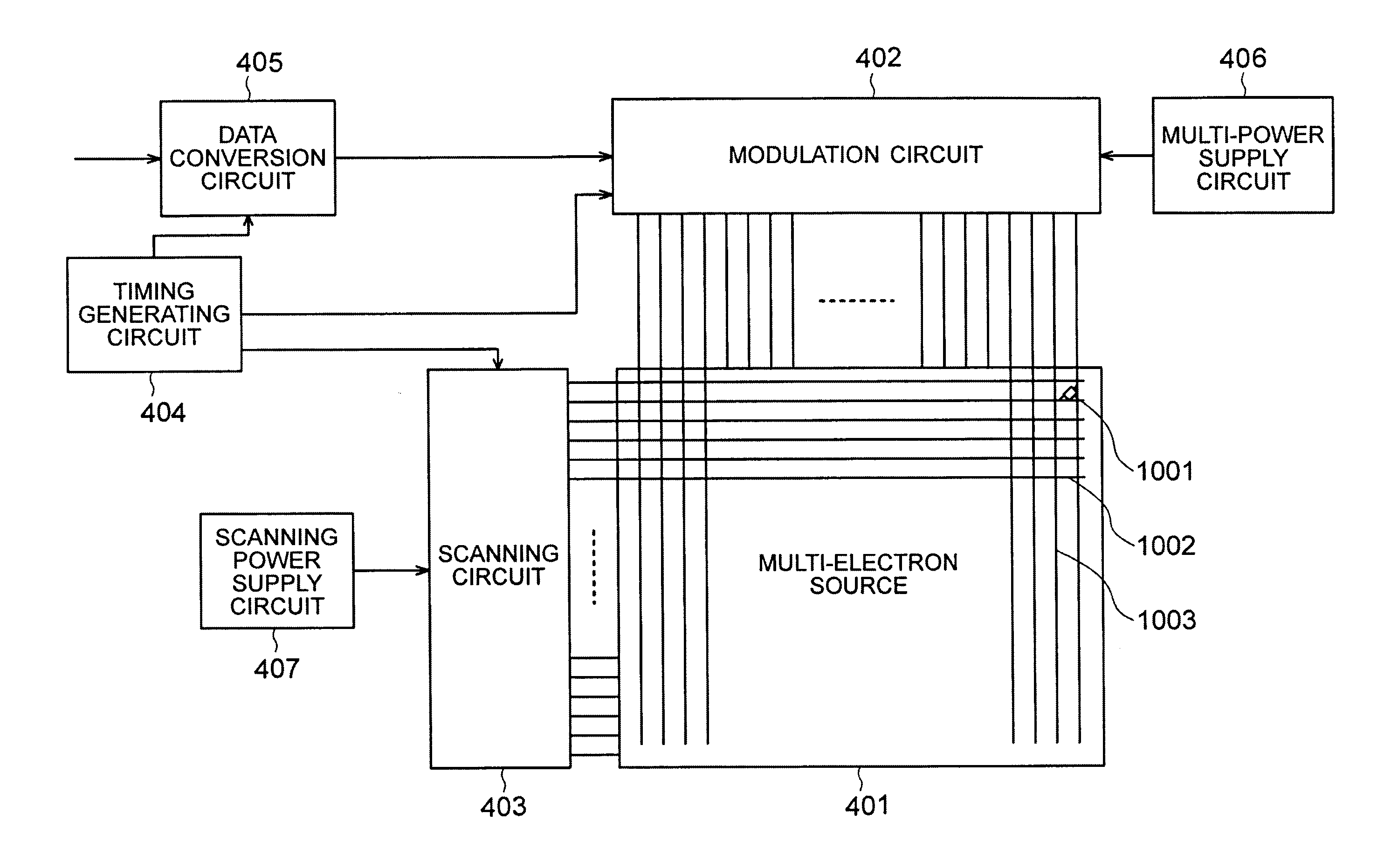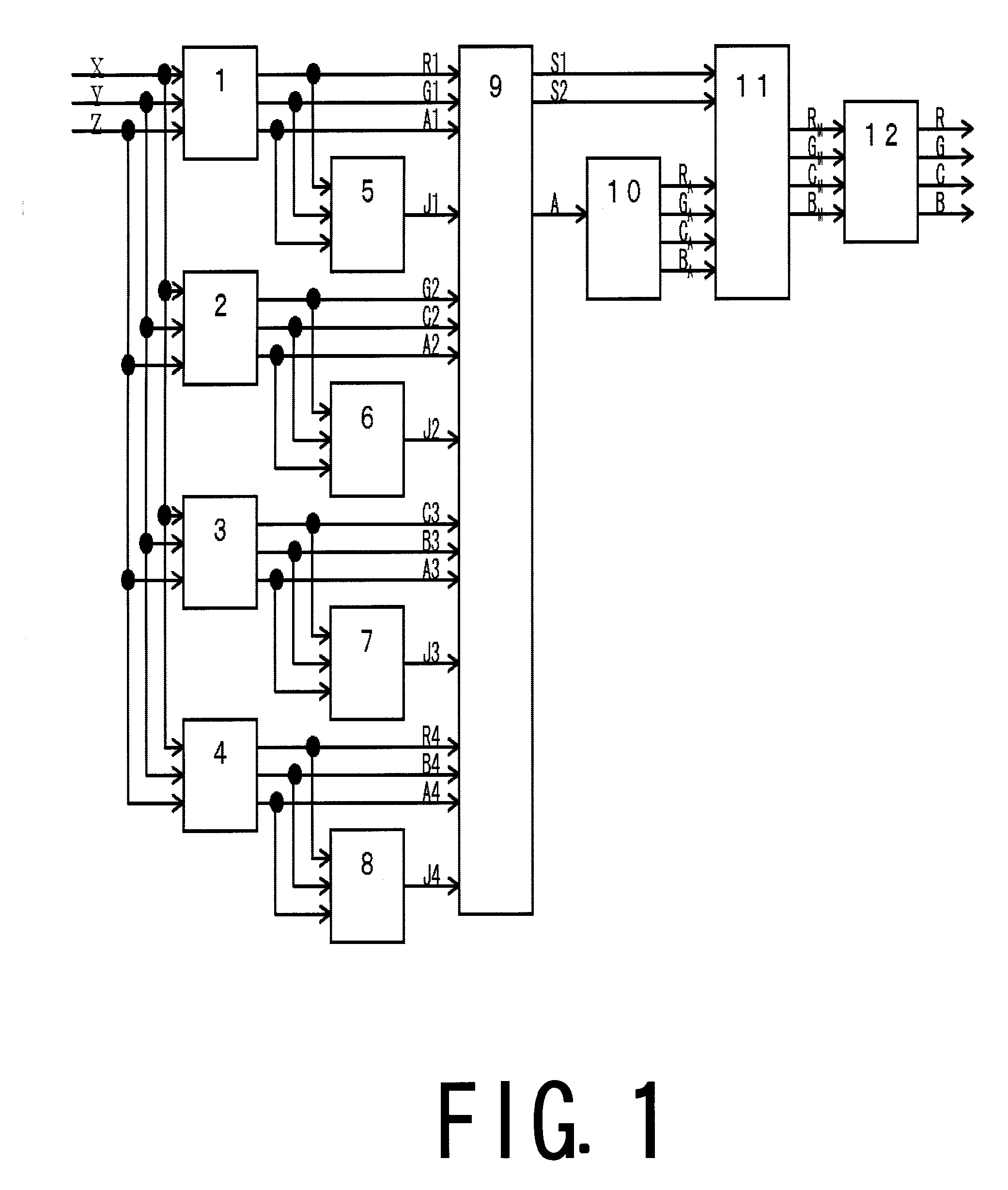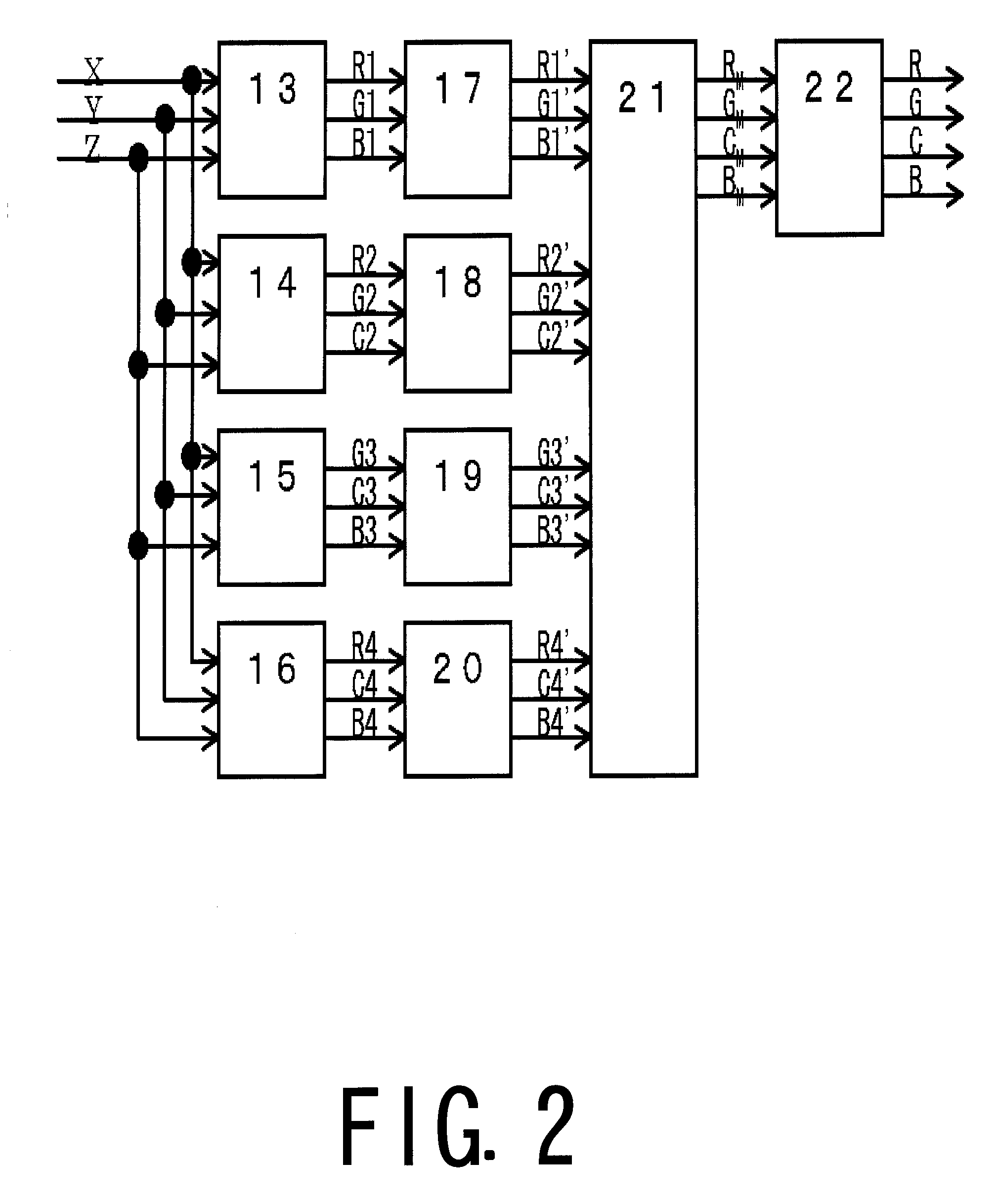Signal processing method, image display apparatus, and television apparatus
- Summary
- Abstract
- Description
- Claims
- Application Information
AI Technical Summary
Benefits of technology
Problems solved by technology
Method used
Image
Examples
first embodiment
[0050] In the display using the present embodiment, one pixel is composed of four colors (four sub-pixels) which are different from each other. Here, respective colors are R (red), G (green), C (cyan) and B (blue). However, each color of the sub-pixel is not limited to a combination of these colors. Hereinafter, each color of the sub-pixels is referred to as a primary color. In a XYZ chromaticity coordinate at the highest lighting of each primary color, R is defined as (XR, YR, ZR), G is defined as (XG, YG, ZG), C is defined as (XC, YC, ZC), and B is defined as (XB, YB, ZB). A mixed color obtained by synthesizing four primary colors in a mixture ratio (k, l, m, n) is defined as A (XA, YA, ZA) and the mixed color is defined by “Mathematical Expression 5” (corresponding to “a linear type combination” of the present invention). A mixed color A is converted into a plurality of primary colors by “Mathematical Expression 10”. Therefore, it is preferable that the mixed color A is a color o...
second embodiment
[0060] The example of the display according to the present embodiment that one pixel is composed of four primary colors, R, G, C, and B will be described below. It is assumed that R is (XR, YR, ZR), G is (XG, YG, ZG), C is (XC, YC, ZC) and B is (XB, YB, ZB) in the XYZ chromaticity coordinate.
[0061] Here, in the case of displaying an arbitrary color D in the XYZ chromaticity coordinate (XD, YD, ZD) using four primary colors, the matrix calculation will be made with respect to the all combinations of three primary colors in four primary colors, namely, (RGC, GCB, RCB, RGB). With respect to each of four combinations, three coefficients for displaying the color D by three primary colors are obtained (Mathematical Expressions 12 to 15). Thereby, four combinations of the different three primary colors can be obtained. (r21g21c21)=(XRXGXCYRYGYCZRZGZC)-1·(XDYDZD)<Mathematical Expression 12>(g22c22b22)=(XGXCXBYGYCYBZGZCZB)-1·(XDYDZD)<Mathematical Expression 13>(r23c23b2...
third embodiment
[0076] According to the first and second embodiments, the coefficient of any of four primary colors R, G, C, and B may exceed 1 depending on the value of the mixed color A and the value of the color D. In this case, seeking a difference between 1 and the value of the coefficient exceeding 1 and representing the difference by other primary color, the coefficients of all primary colors can take the values from 0 to 1. For example, when the value of the coefficient of the primary color R is “1.1”, a difference between “1.1” and “1”, namely, “0.1” will be replaced with the coefficient of other three primary colors.
[0077] At first, the coefficient of the primary color when each primary color is represented by other three primary colors is obtained in advance. “Mathematical Expression 17” is a mathematical expression when R is represented by G, C, and B; “Mathematical Expression 18” is a mathematical expression when G is represented by R, C, and B; “Mathematical Expression 19” is a mathe...
PUM
 Login to View More
Login to View More Abstract
Description
Claims
Application Information
 Login to View More
Login to View More - R&D
- Intellectual Property
- Life Sciences
- Materials
- Tech Scout
- Unparalleled Data Quality
- Higher Quality Content
- 60% Fewer Hallucinations
Browse by: Latest US Patents, China's latest patents, Technical Efficacy Thesaurus, Application Domain, Technology Topic, Popular Technical Reports.
© 2025 PatSnap. All rights reserved.Legal|Privacy policy|Modern Slavery Act Transparency Statement|Sitemap|About US| Contact US: help@patsnap.com



